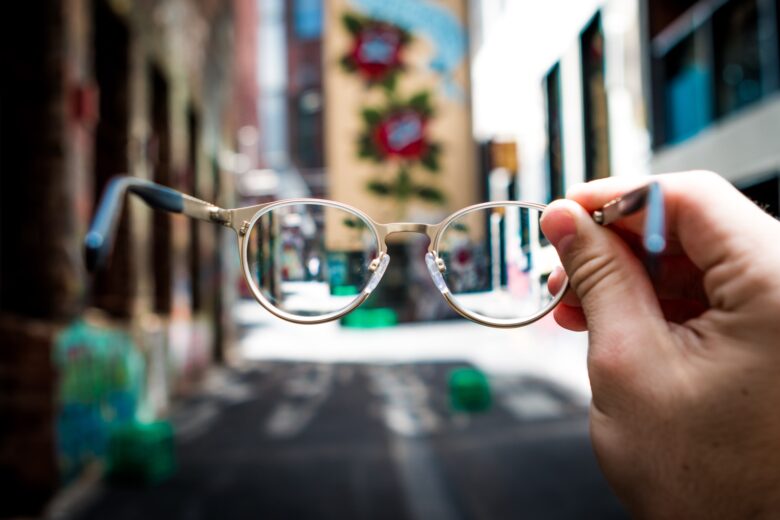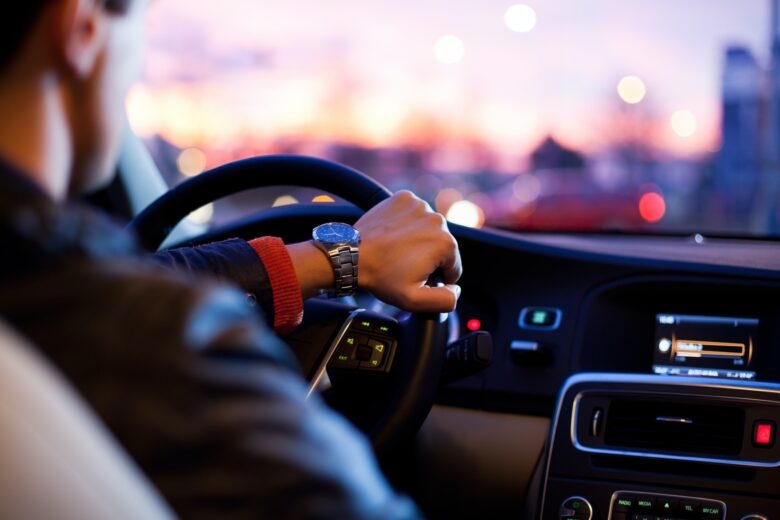The importance of the correct choice of frames and lenses many drivers don’t realize it, but certain sunglasses are not suitable for driving a vehicle. There are some glasses that do not permit enough light to enter in eyes; this impairs visibility. In contrast, others may have a certain lens color that negatively affects the spectrum and contrast of distinct colors for a driver.
Frame style

When driving, it is important to keep your peripheral vision clear and protected from the sun. Oversized frames, made famous by celebrities like Victoria Beckham and Paris Hilton, can obstruct your peripheral vision and make it difficult to detect road hazards, increasing the risk of accidents.
Frames with large lenses and thin temples, like aviators, are good for maintaining your peripheral vision while also protecting you from the sun. Wrap-around styles are also good for providing sun protection from all angles without obstructing your view.
Choosing the right frame for your driving sunglasses is important not only for your safety but also because you could be penalized in the event of an accident if your sunglasses are found to have contributed to the collision. Frames of sunglasses are up to anyone’s personal choice. Although there are no specific and proper guidelines for sunglasses frames, we strongly recommend that you choose a style that allows you to see clearly from all angles.
Lens color
Different colored lenses affect the amount of visible light that can reach the eyes, how a person can see certain colors and the resulting degree of visual contrast. Choosing the wrong color lenses can negatively affect the driver’s ability to see road signs and traffic lights and detect potential hazards.
Buying online

Discover more than 180 designer eyewear brands and over 80,000 pairs of sunglasses & eyeglasses for the best price at SmartBuyGlasses. Offering game-changing technology,
buying glasses online has never been easier with the help of their Virtual Try-On tool that works just like an online mirror, allowing you to see yourself wearing hundreds of eyeglasses before you buy.
Scientific research indicates that in general, pink, blue, and green-tinted lenses should NOT be worn while driving as they can make red lights indistinguishable. Sunglasses in these shades labeled safe to drive are the exception – the intensity of the lens color can make a significant difference in safety.
The best sunglasses lenses for driving are gray and brown (polarized) because they are neutral colors, which means they do not change colors when worn. Many sunglasses designed specifically for drivers also feature yellow and amber lenses, improving contrast and definition.
Dye density
Whichever (safe!) The tinted glass you choose, the density of the tint, is another important consideration. It also looks great on the eyes. Tint density can be rated from 0 (light) to 4 (very dark) and is the most important factor in determining how much light can reach the wearer’s eyes. Two pairs of similar sunglasses with gray lenses, for example, will not block the same level of light if they have different density ratios.
According to an estimate, the sunglasses must be marked with their relevant density number. Sunglasses with 3-8% light transmission should never be worn while driving, while glasses with 80-100% light transmission is only really useful if used in cloudy weather or for driving at night. Driving with sunglasses with the incorrect tint density may reduce concentration or cause drowsiness, thus increasing the risk of traffic accidents.
Light sensitive and driving glasses

There are so many people that like to wear sunglasses with light-sensitive, or “photochromic” lenses, whose tint density changes with the degree of UV exposure; photochromic or Standard Transitions lenses do not. Not suitable for car use. The windshield’s presence can block up to 40% of UV light and slow down the rate at which the glasses change color, meaning that drivers could end up driving in inappropriate shadows at any time (i.e., be too light or too dark).
However, Transitions are specially designed to be worn behind the windshield and are safe to use while driving. These lenses are great and help a lot if you drive in different sunlight levels, although they won’t be completely clear indoors.
Eyeglasses
Often, a graduated tint, a road-safe color and has adequate tint density, is preferred for driving because it has a darker tint at the top of the lens than at the bottom. This means you can still see the dash clearly while protected from the sun. A graduated tint is considered most effective when the sun is high in the sky but less useful when the sun is low on the horizon due to the change in the lens’s lower tint density.
Polarized lenses
A polarized lens is different from the other glass lens as it is made up of special chemicals to confine the light in a fixed plane. Polarized lenses are considered a very good choice for drivers because they significantly reduce glare from headlights and reflect light on wet road surfaces. It makes the driving experience much more comfortable by reducing eye strain and providing UV protection. Polarized lenses can also be useful in foggy or foggy conditions, as they can help improve contrast and sharpen details.
Lens coatings
While choosing sunglasses with specific lens coatings can help ensure visual clarity while driving and improving your sunglasses’ performance and longevity.
When the lenses are produced, they are highly polished to give a smooth finish, but that means they reflect about 10% of the light that hits them. An anti-reflective coating greatly reduces this phenomenon, which means that more light can be transmitted through the lens, thus improving visibility. Another benefit of the anti-reflective coating is that it repels water and grease, making it easy to keep your sunglasses clean and clear.
Some eyewear manufacturers incorporate their proprietary anti-reflective coatings for their driving sunglasses, whether polarized or not.
The scratch-resistant coating helps extend the life of your sunglasses by helping to protect your lenses from damage. It is easy to scratch glasses by getting them dirty or hitting them with objects; these scratches increase glare and significantly impact your vision’s clarity.

